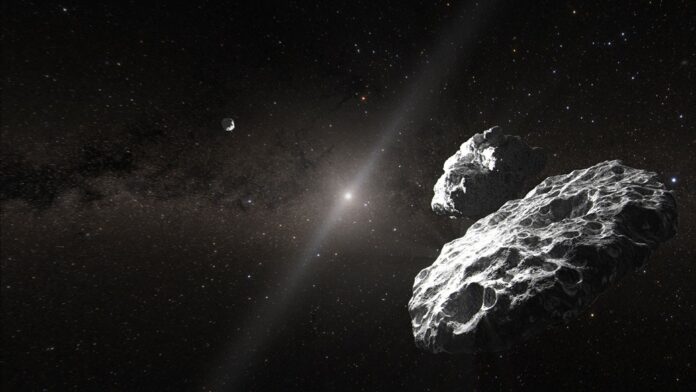
Key Developments
- NASA furloughed over 15,000 employees on October 1st during the government shutdown, just two days before interstellar object 3I/ATLAS reached its closest approach to Mars on October 3rd
- Despite claiming data processing would take several days, NASA provided select mainstream outlets with preliminary information on October 4th characterizing 3I/ATLAS as an ordinary comet
- Harvard astrophysicist Dr. Avi Loeb warns the object exhibits anomalous properties requiring continued observation, including a mass exceeding 33 billion tons and a possible connection to the 1977 “Wow! signal”
USA HERALD – The timing of the October 1st government shutdown could not have been worse for space science transparency. As NASA furloughed more than 15,000 employees, the interstellar object 3I/ATLAS was making its closest approach to Mars—a critical observation window that USA Herald previously reported would offer the best opportunity for NASA’s space-based telescopes and satellite equipment to capture detailed images and data for public release.
NASA initially indicated that processing the images and data collected during the October 3rd Mars flyby would require several days. Yet just 24 hours later, on October 4th, the agency had already revealed information to certain mainstream media outlets with no supporting technical reports or images. Those briefings characterized 3I/ATLAS as just a regular comet without addressing the mysterious and anomalous features that have puzzled astronomers.
Harvard professor Dr. Avi Loeb, a leading voice in interstellar object research, maintains that 3I/ATLAS still warrants close attention as it travels through our solar system. His concerns are particularly relevant given that scientists believe the new generation of space telescopes may begin discovering at least one interstellar object per month.
Dr. Loeb and his colleagues compiled approximately 4,000 observations from 227 observatories worldwide tracking 3I/ATLAS as it moved across the sky. Their analysis revealed a striking anomaly: despite losing 150 kilograms of mass every second in the direction of the sun—confirmed by Hubble Space Telescope images taken on July 21st—the object’s trajectory showed no deviation from a path shaped purely by gravity.
“Losing mass in a preferred direction is supposed to push the object in the opposite direction,” Loeb explained. “So, there was a force acting on it as a result of its evaporation, and that did not introduce itself into the trajectory.”
For this to occur, Loeb calculated that 3I/ATLAS must be extraordinarily massive—more than 33 billion tons. At solid density, that would require a diameter exceeding 5 kilometers, roughly the width of Manhattan Island. Critically, Loeb notes this is only a lower limit, meaning the object could be substantially larger.
“It would be really anomalous the bigger it is,” Loeb stated.
The October 3rd Mars flyby presented a unique imaging opportunity. The object passed within 29 million kilometers of Mars, where several NASA orbiters are stationed. The Mars Reconnaissance Orbiter carries a camera called HiRISE capable of capturing high-resolution images with a pixel size of 30 kilometers—potentially sufficient to determine 3I/ATLAS’s true size and structure.
NASA’s hasty media briefings came before this Mars flyby data could be properly analyzed, raising questions about why the agency rushed to characterize the object as ordinary before completing its analysis of the most detailed observations yet captured.
Adding to the intrigue, Dr. Loeb noted that 3I/ATLAS’s trajectory is aligned within 9 degrees of the direction from which the famous “Wow! signal” was detected on August 15, 1977. That powerful radio signal, discovered by astronomer Jerry Ehman who wrote “Wow!” next to it on the discovery chart, has never been explained.
The chance of this alignment occurring randomly is just 0.6 percent, leading to the question of whether 3I/ATLAS itself could have transmitted the Wow! signal decades ago.
Dr. Loeb’s research demonstrates that 3I/ATLAS exhibits properties that cannot yet be explained by conventional comet models. The object’s extreme mass, its resistance to rocket-like forces from outgassing, and its curious directional alignment all suggest this interstellar visitor deserves more rigorous investigation than NASA’s preliminary media briefings would suggest.
NASA has not announced when complete Mars flyby data and images will be released to the public. The agency’s Mars Reconnaissance Orbiter data typically undergoes processing and calibration before public release, though expedited release schedules are possible for objects of high scientific interest.
Dr. Loeb indicated his team expected to determine the object’s true size “by the end of this week” using Mars orbiter data.


